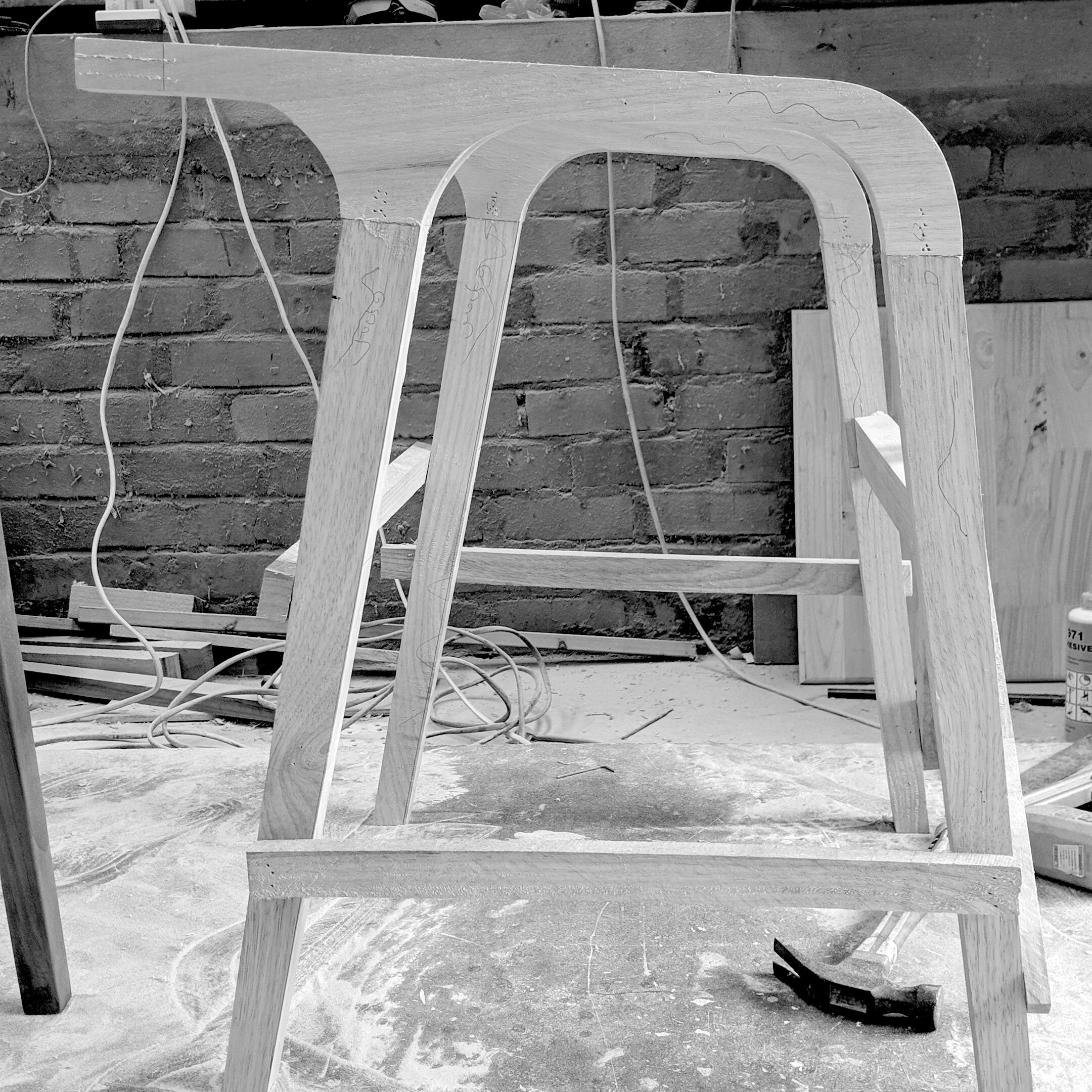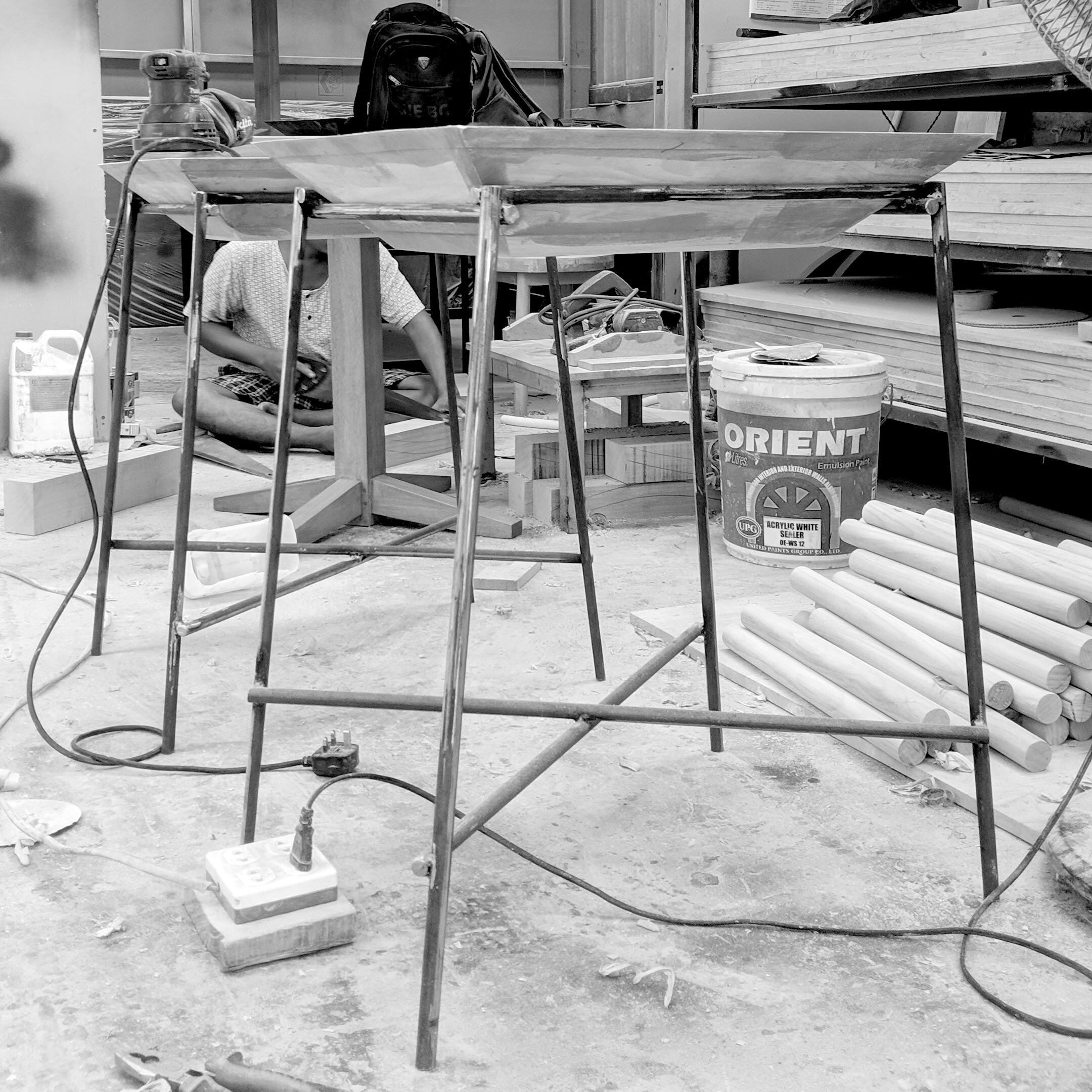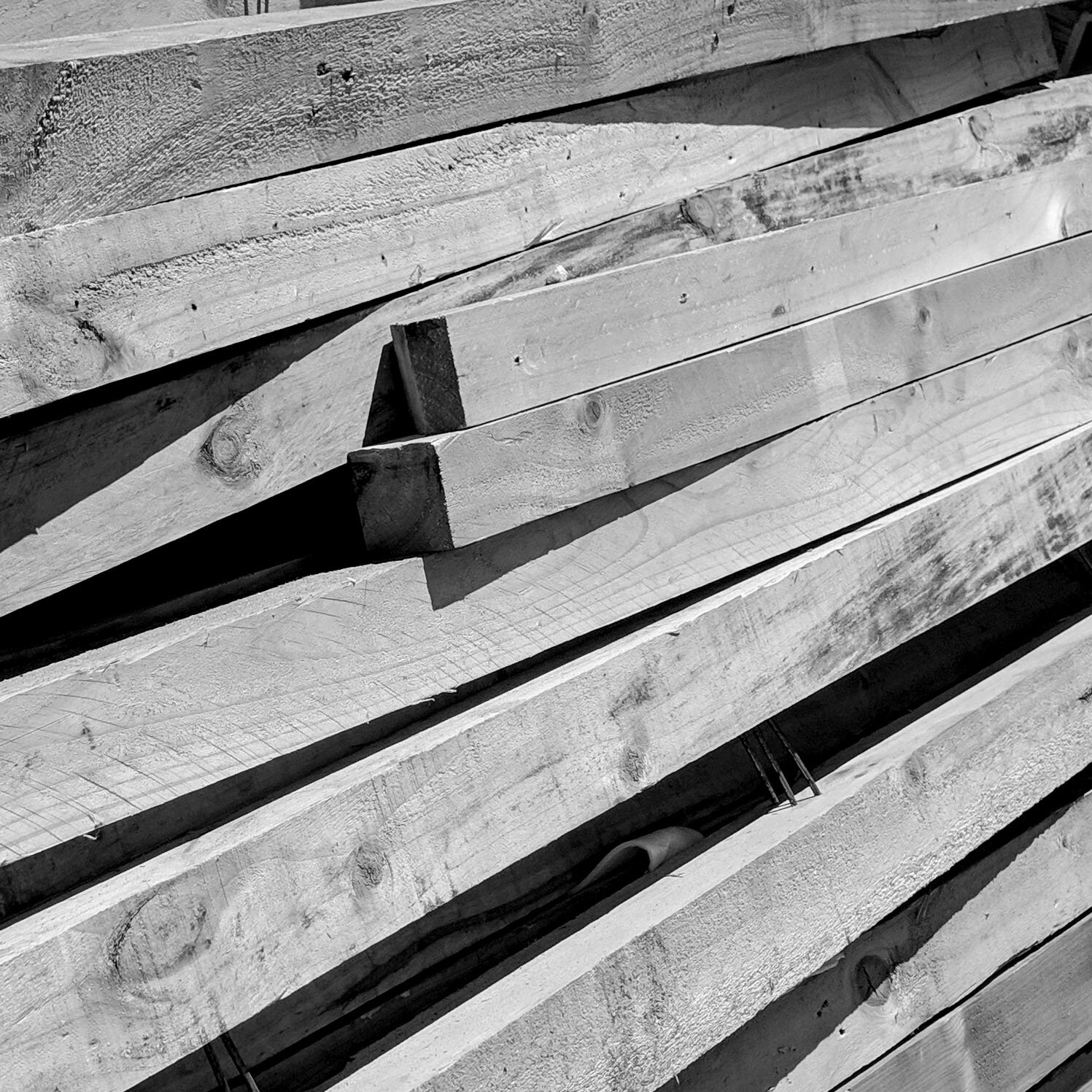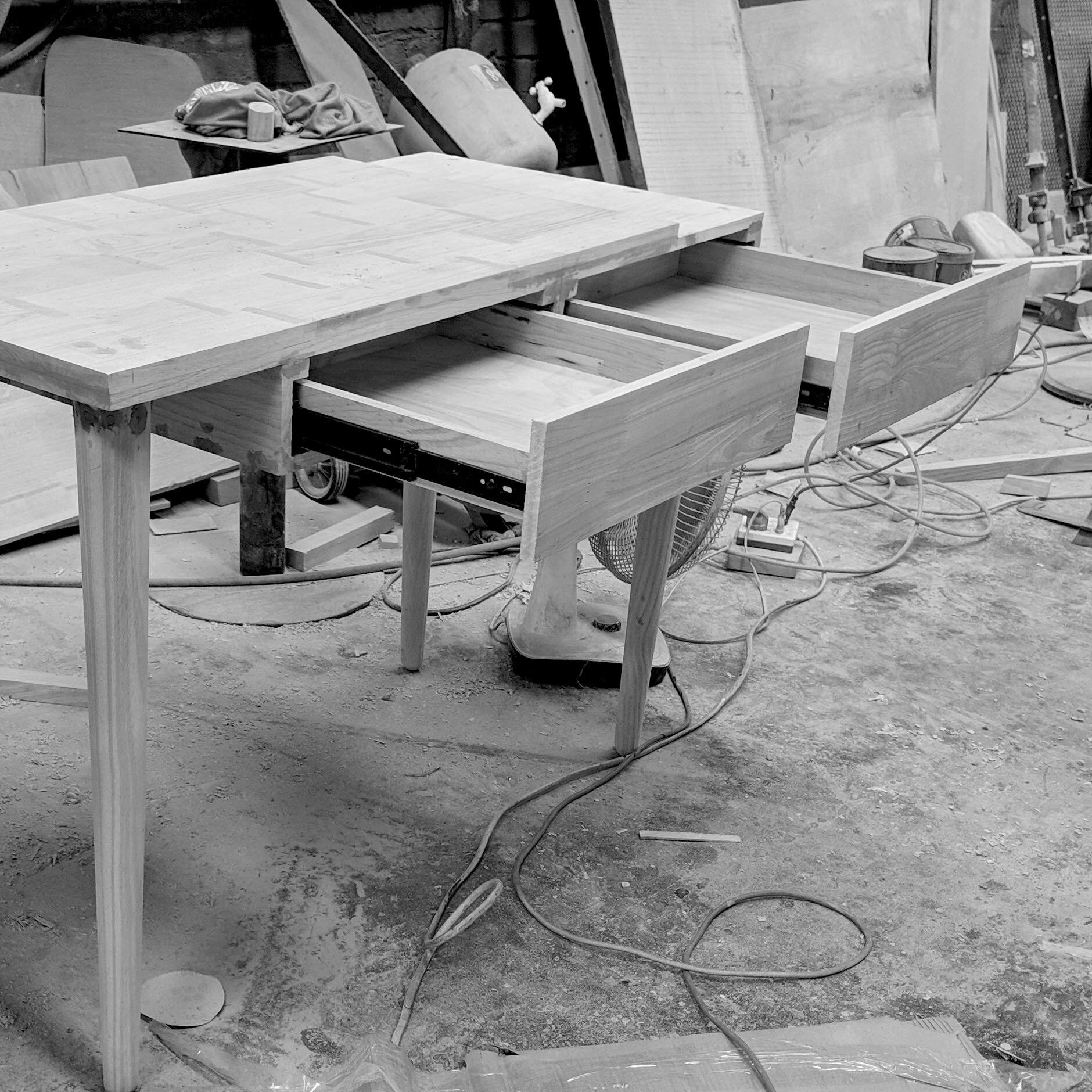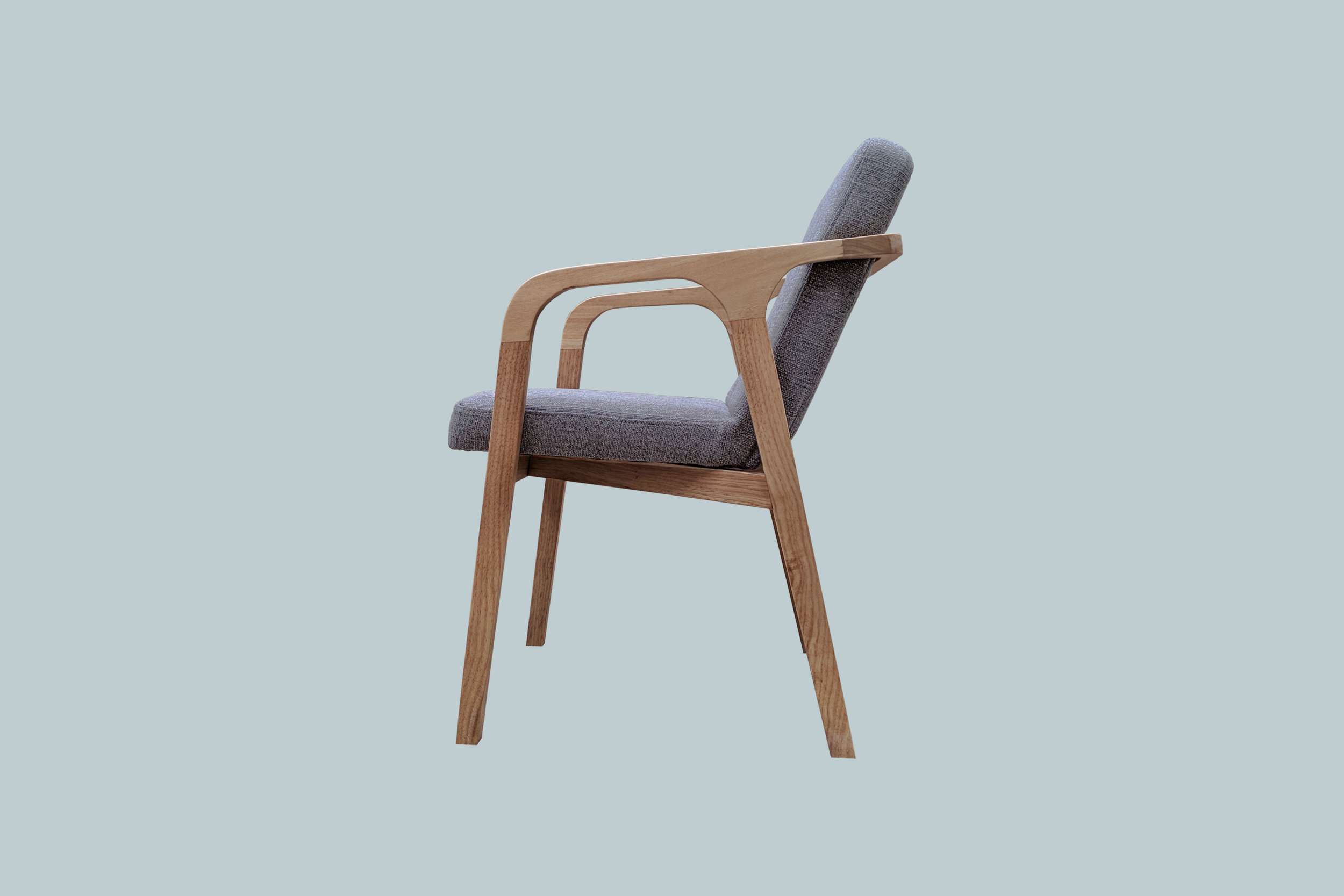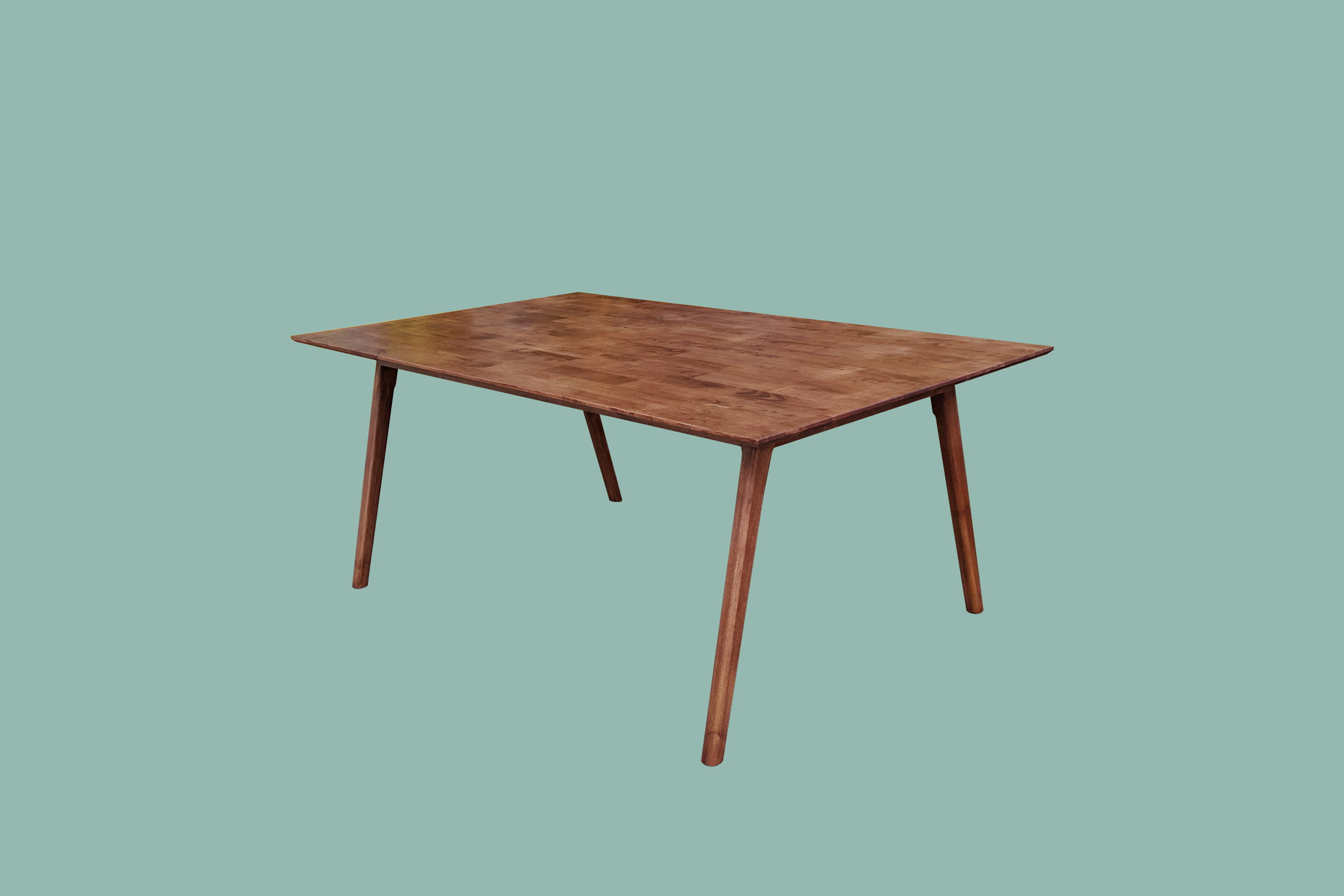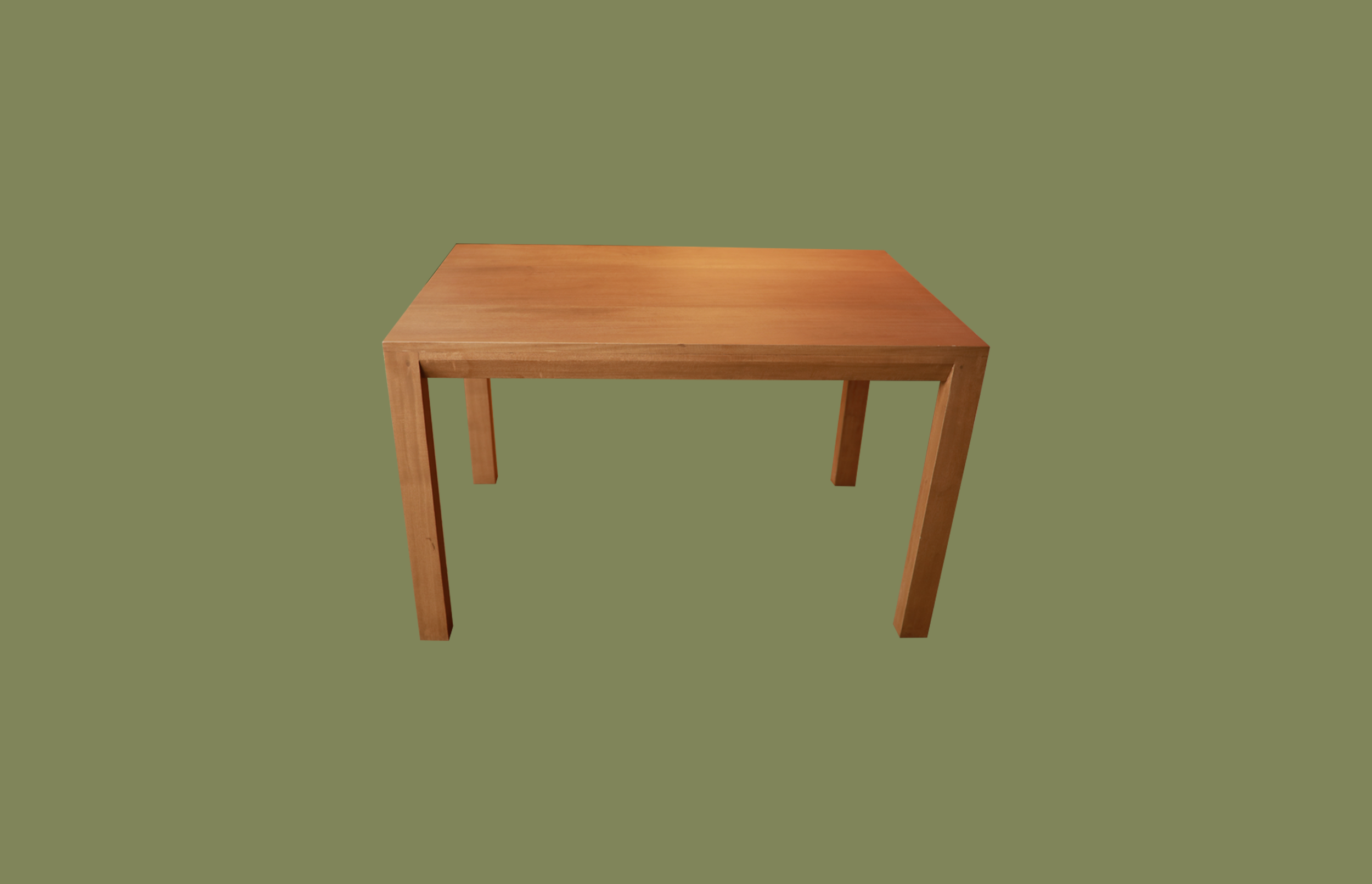Treasuring Solid Wood
Solid wood is essentially natural wood that comes from trees. You might ask, don’t all wood come from trees? Not anymore. With technological advances and the demand for cheaper furniture, there are multiple types of engineered wood, or man-made wood that uses scraps of timber and adhesive to put them together. Do we have it in Yangon? Absolutely, with varying grades in import and locally manufactured quality.
Most up-and-coming interiors you see in Yangon will use some type of engineered wood and veneers to give the overall bones of a room structure, and maybe use solid wood for loose furnishings, if the budget allows for it.
At 16’96 Concepts, we use solid wood because it ages beautifully and a natural non-invasive material for our carpenters to work with. In hindsight, it is also more environmentally-friendly in that no matter how old a furniture made in solid wood is, we can restore it back to its original finish.
Given its value, we wish it was bulletproof. We coat all our handcrafted pieces with care, use the best finishing materials available here, for durability. But let’s face it. Solid wood is no Dwayne Johnson. It chips, it cracks according to the temperament of the environment it is in, and depending on the design, can be quite heavy. Even the highest quality wood (i.e Burmese teak) is susceptible to scratches and abrasions if not properly cared for.
If you have solid wood furniture in your home, most likely you’ve made the decision to invest in your space. Like most things, if you care for it and put in the effort, it will grow to last and age beautifully. Here are some pro tips:
Dust, dust, and dust away! Frequent dusting removes airborne deposits that build up a filmy layer that can scratch the surface. Use clean, dry, soft cloths, or feather dusters. (P.S Never use an all-purpose cleaner unless your furniture has a plastic coating.)
Avoid direct sunlight. When you expose solid wood furniture to sunlight for prolonged periods, especially our tropical Burmese sun, spotting can appear across the cross sections. If you’re not careful, your furniture may experience long cracks across its joints.
Use coasters and placemats! Try not to put extremely hot coffee cups or plates on your wooden tables. If the wood leans towards the soft, porous side, hot objects may leave distortions to your beautiful pieces.
Invest in a humidifier or dehumidifier. Wood swells in high humidity and shrinks in low. All this up-and-down eventually warps the wood. Invest in a technology that can control and monitor your climate.




